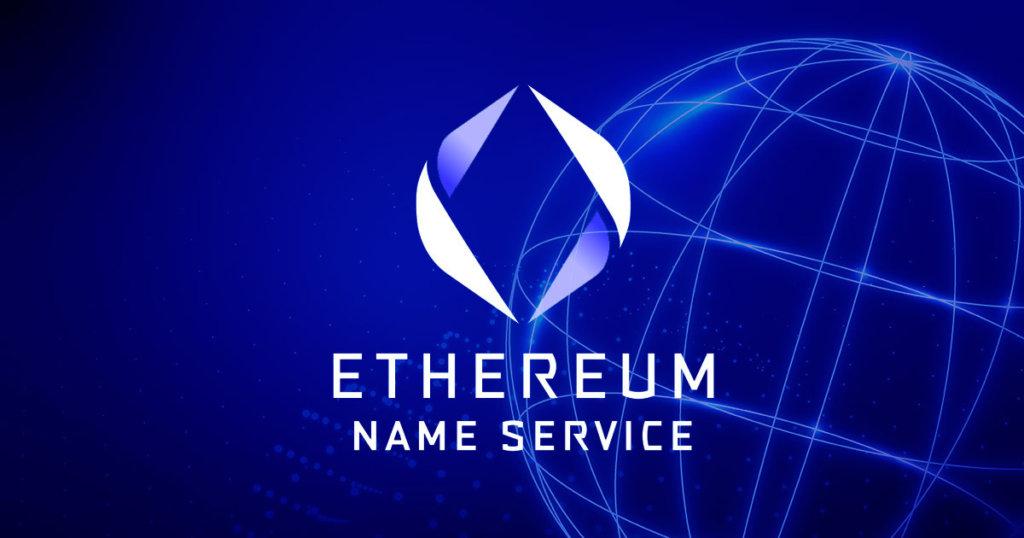A Beginner’s Guide to Ethereum Name Service (ENS)
Crypto users often complain about the long strings of wallet addresses because these strings are long enough that they can’t be memorized at all. The users can’t even store those addresses on their computers or other devices as they may lose everything in case of a hacking attempt.
Therefore, the users are bound to store hard copies of these addresses. And some users are even unable to access their funds because they can’t find the hard copy of their wallet addresses. Ethereum Name Service has decided to solve this problem by introducing a new technology where users can choose simple and easy-to-remember addresses for their wallets.
What is Ethereum Name Service?
Ethereum Name Service is a naming service built on Ethereum. The users can choose easy-to-read names for their wallet addresses and other machine-readable identifiers using this service. The service follows the mechanism of a Domain Name System (DNS).
In the early days of the internet, users had to remember the IP addresses to access their desired information. Although it was useful for institutes and government organizations, it appeared as a huge problem when average users started accessing the information.
In the 1970s, Elizabeth Feinler, an American scientist, prepared research showing the difficulties the users have to face when accessing some information on the internet. So, Paul Mockapetris, an American computer scientist, took some inspiration from this research and ended up introducing Domain Name System in 1983.
The blockchain industry is facing a similar but more complex problem because the users need to remember long wallet addresses to transfer funds to each other. So, a group of developers has introduced this new technology to transform complex strings into simplified text.
ENS can also be used for metadata, hashes, transaction IDs, and other complex numbers that are used in the blockchain industry. The project is built on Ethereum because Ethereum is the largest blockchain network that hosts smart contracts. It enables users to choose a unique yet easy-to-read name for their smart contracts.
ENS uses NFT (Non-fungible tokens) to assign unique identifiers to smart contracts. Thus, these tokens can’t be replicated.
ENS vs DNS
ENS isn’t designed to eliminate the traditional DNS but it’s supposed to operate in parallel with the existing system. However, it offers a few additional benefits that make it a better option for blockchain users.
The basic function of both networks is the same as they both need to convert machine-readable strings of numbers into human-readable strings. But ENS is controlled and operated by all the community members whereas DNS is under the control of different centralized authorities.
So, the ENS significantly eliminates the risk of hacking attempts while ensuring the privacy of users’ data. ENS provides governance rights to its token holders so they may help with improving the platform over time.
ENS vs. Other Naming Services
ENS isn’t the only naming service in the blockchain industry. There are other projects like Blockstack and Namecoin that are designed around the same concept. However, the difference is that other naming services are trying to replace the standard DNS naming service whereas ENS is focused on working in parallel with the DNS.
Moreover, it has the goal of providing a reliable and distributed naming domain for Ethereum users.
ENS Brief History
Ethereum Naming Service was launched by Alex Van De Sande and Nick Johnson, former Google software developers, in May 2017. They both also helped with the design and front-end development of Ethereum. They both built a team after receiving $1 million from Ethereum Foundation.
In 2021, the company introduced ENS tokens to provide governance rights to the token holders. These tokens were airdropped to the users who had already adopted the service. Around 25% of the total supply was airdropped to the ENS users and the remaining tokens will be issued through different methods.
How Does ENS Work?
ENS eliminates the need for sharing a 42-character address for selling a digital product. The users can choose a human-readable name for their products/NFTs with the help of ENS. For example, a user can choose hotcryptoinfo.eth as a domain name for their product. Similarly, they can choose sub-domains like learn.hotcryptoinfo.eth and ens.sell.hotcryptoinfo.eth if they’re willing to sell additional products.
The overall ENS ecosystem is made up of two smart contracts:
Registry
The users need to register a domain on the ENS with a unique name. The network has established a registrar to keep a record of all the registries. The mechanism that is used to track the registries and transfers is called “Registry” within the ENS ecosystem. The person who registers a domain name for the first time is known as Registrant.
The owner has the authority to transfer the domain name to anyone whenever he wants. If a user has lost access to his existing account, he can reclaim the domain name by providing the required information from another account.
Resolvers
This part of the ENS network is designed to translate the names into addresses. The platform first verifies the identity of the resolver from the registry and then asks the question from the resolver to complete the process.
ENS Tokenomics
ENS is the native token of Ethereum Name Service that provides governance rights to the users. With a circulating supply of 20.2 million tokens, it has a market cap of $293 million. It has a total supply of 100 million tokens that will be released over time. It ranks among the 200 best cryptocurrencies in terms of market cap.
Conclusion
Ethereum Name Service is an Ethereum-based project designed to translate wallet addresses and other machine-readable strings of numbers into human-readable names. It’s dedicated to enhancing the mass adoption of Web 3 without causing any harm to the traditional internet.
If you need more information about how Ethereum Name Service works, feel free to get in touch with us.


